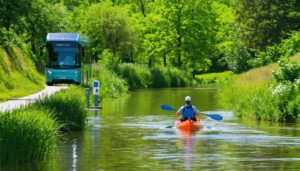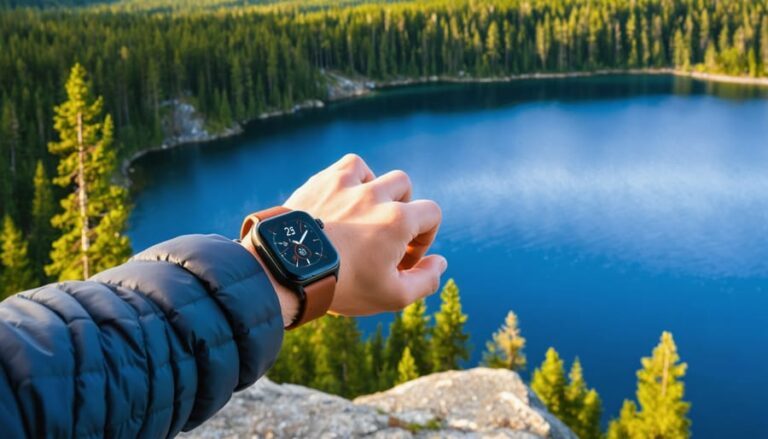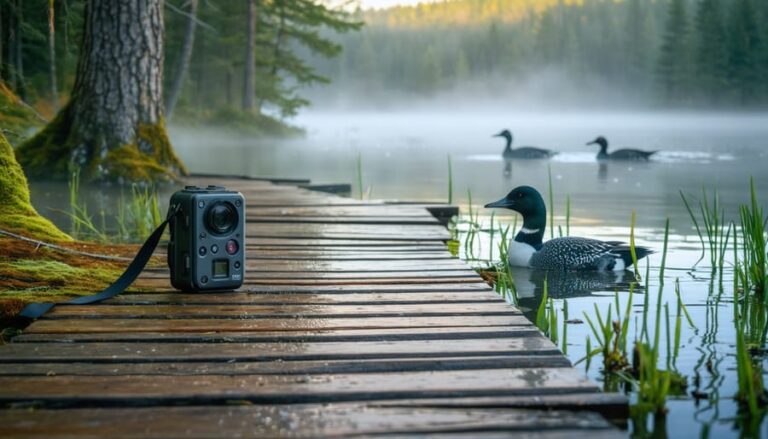Pack a small waterproof pouch with hand sanitizer, electrolyte packets, and blister prevention tape before your next Ontario adventure—these three items alone will save you from the most common travel discomforts that derail hiking trips, canoe expeditions, and camping weekends across the province.
Your travel wellness kit isn’t just about treating problems after they happen. It’s your first line of defense against dehydration on the Bruce Trail, unexpected stomach issues at remote backcountry campsites, and those annoying hot spots that turn into painful blisters halfway through exploring Algonquin Park. I learned this the hard way during a weekend trip to Killarney Provincial Park when a simple headache turned into a two-day ordeal because I’d forgotten basic pain relief medication.
The beauty of a well-curated wellness kit is its dual purpose: it keeps you comfortable during minor inconveniences and prepared for genuine emergencies. Whether you’re island-hopping in the Thousand Islands, winter camping in Muskoka, or exploring the Niagara Escarpment, the right combination of preventive supplies and treatment essentials means you’ll spend more time enjoying Ontario’s stunning landscapes and less time worrying about “what if” scenarios.
A thoughtfully assembled kit weighs less than a water bottle but delivers peace of mind that’s worth its weight in gold—especially when you’re hours away from the nearest pharmacy and your body decides to remind you that adventure and comfort don’t always go hand-in-hand.
Why Every Ontario Traveler Needs a Wellness Kit
Ontario’s backcountry is breathtaking, but it’s also unpredictable—and that’s exactly why a well-stocked wellness kit should be as essential as your camping gear or hiking boots.
Here’s the reality: when you’re exploring Algonquin’s remote trails or camping along Lake Superior’s rugged coastline, the nearest pharmacy might be hours away. I learned this the hard way during a canoe trip when a friend developed a nasty blister on day two. We had bandages, but no blister-specific treatment, which turned a minor annoyance into three days of hobbling discomfort.
Ontario’s landscapes throw curveballs even seasoned travelers don’t always anticipate. Morning might start with sunshine requiring sunscreen, but by afternoon, you could face rain, dropping temperatures, and swarms of blackflies. Wildlife encounters—from poison ivy brushing against your legs to an unexpected bee sting—happen when you least expect them. These aren’t vacation-enders if you’re prepared, but they absolutely can be if you’re not.
The province’s vast wilderness areas are part of what makes Ontario magical, but remoteness means self-sufficiency becomes critical. Cell service disappears. Help isn’t around the corner. Following Ontario adventure safety tips means acknowledging that minor health issues—headaches, cuts, allergic reactions, digestive troubles—need immediate solutions you’re carrying with you.
Think of your wellness kit as insurance for your adventure. It doesn’t weigh much, doesn’t take significant space, but it transforms potential trip-ruiners into manageable moments. Pack smart, and you’ll spend less time worrying about “what ifs” and more time soaking in those stunning Canadian Shield sunsets.

Building Your Travel Wellness Kit: The Essentials
First Aid Basics That Actually Get Used
Let me tell you what actually ends up saving the day on Ontario trails. Last summer on the Bruce Trail, my friend Sarah stepped off the path in her brand-new hiking boots—fifteen minutes in, and she had a blister the size of a loonie. Having **blister bandages** in my pack turned a potential trip-ender into a minor pause.
**Adhesive bandages** are your go-to for those little scrapes from rocky scrambles at Rattlesnake Point or branch scratches along Algonquin’s backcountry routes. Pack various sizes—trust me, you’ll use them.
**Antiseptic wipes** become essential after treating any cut, especially near water sources where bacteria love to hang out. I learned this the hard way after a slip on wet rocks at Elora Gorge.
**Pain relievers** like ibuprofen aren’t just for headaches—they’re lifesavers for sore muscles after tackling the Cup and Saucer Trail on Manitoulin Island. Pack both acetaminophen and ibuprofen since they work differently.
**Antihistamines** are non-negotiable during Ontario’s bug season (basically May through September). Black flies in cottage country will test your sanity, and an allergic reaction to a bee sting can escalate quickly on remote trails.
Finally, **tweezers** with a good grip remove splinters from wooden boardwalks and ticks—yes, ticks are increasingly common in Southern Ontario. Check yourself after any woodland hike and remove them promptly.
These aren’t fancy items, but they’re the ones I actually reach for trip after trip.
Protection from Ontario’s Elements
Ontario’s stunning landscapes come with their own set of natural challenges, so protecting yourself from the elements is essential year-round. During those glorious summer months exploring Algonquin or lounging at Wasaga Beach, mineral-based sunscreen with SPF 30+ becomes your best friend—look for reef-safe formulas that won’t harm our precious lakes and waterways. I learned this the hard way after a particularly brutal sunburn during a canoe trip!
Bugs are practically Ontario’s unofficial mascot, especially blackflies in May and mosquitoes all summer long. Pack an eco-friendly insect repellent with natural ingredients like citronella or eucalyptus oil—they work surprisingly well without the harsh chemicals. Many Ontario outdoor shops now carry locally-made options that support small businesses while keeping you bite-free.
Don’t forget a nourishing lip balm with SPF protection. Ontario’s winds can be fierce, whether you’re hiking the Bruce Trail in summer or snowshoeing in winter. Those chapped lips are no joke!
Finally, toss in some after-bite treatment or aloe vera gel. Despite your best efforts, a mosquito or two will find you—it’s inevitable. Natural options like tea tree oil work wonders for reducing itching and inflammation, letting you get back to enjoying your adventure without constantly scratching.

Hydration and Nutrition Support
When you’re exploring Ontario’s backcountry trails or camping near Algonquin Park, staying properly fueled and hydrated isn’t just about comfort—it’s essential for safety. I always pack electrolyte packets in my kit; they’re lifesavers after a long paddle or hike, especially during humid Ontario summers when you’re sweating more than you realize. Water purification tablets are non-negotiable for remote adventures where fresh water sources might be questionable—they’re lightweight and can turn that pristine-looking stream into safe drinking water within minutes.
Energy bars serve double duty as emergency rations and quick fuel when you’re miles from the trailhead. Choose options with natural ingredients that won’t melt in your pack. Here’s an insider tip: ginger chews or natural anti-nausea remedies are worth their weight in gold if you’re prone to motion sickness on winding cottage-country roads or choppy boat rides. I learned this the hard way during a particularly rough crossing on Lake Superior! These small additions take up minimal space but can transform a potentially miserable situation into a manageable one, keeping your outdoor adventure on track.
Personal Health Items
Let me tell you about something I learned the hard way on a canoe trip in Algonquin: forgetting my prescription allergy medication turned a beautiful weekend into a sneezy, itchy ordeal! Now I never travel without my personal health essentials properly organized.
Start with a waterproof pouch for your prescription medications—Ontario’s sudden rain showers won’t care that you’re mid-portage. Keep medicines in their original labeled containers and bring a few extra days’ supply. I always snap a photo of my prescriptions on my phone, just in case.
Hand sanitizer is your new best friend, especially when camping without facilities. Choose a travel-sized, eco-friendly option with at least 60% alcohol content. Pair it with biodegradable wet wipes for those moments when Lake Superior’s refreshing waters aren’t quite accessible.
Don’t overlook personal hygiene items like contact lens solution, feminine hygiene products, or any specialized items you need daily. Pro tip: decant liquids into small, labeled containers to save space and weight—your backpack will thank you.
For an eco-conscious insider trick, try reusable silicone travel bottles instead of disposables. Store everything in clear, TSA-approved bags for easy airport screening, and keep one set in your carry-on. You’ll never regret being prepared when adventure calls!
Seasonal Add-Ons for Ontario Adventures
Ontario’s dramatic seasons each bring unique wellness considerations, so think of your kit as having a rotating cast of supporting characters alongside your year-round essentials.
**Winter Wonders (December-March)**
When temperatures plummet, tuck hand and toe warmers into your pack—they’re absolute lifesavers during snowshoeing adventures or ice fishing excursions. I learned this the hard way after a February hike in Algonquin! Add petroleum jelly or a rich barrier cream to prevent windburn and chapped lips. A thermos becomes non-negotiable for warm beverages that help maintain core temperature. Don’t forget extra wool socks in waterproof bags—wet feet in winter can quickly turn dangerous. Comprehensive winter travel preparation extends beyond your vehicle to what you carry on the trails.
**Spring Awakening (April-May)**
Allergy sufferers, this is your season to shine—or rather, to not sneeze constantly! Pack antihistamines, saline nasal spray, and eye drops. Spring’s unpredictable weather means including both rain protection and sun defence.
**Summer Essentials (June-August)**
Cooling neck wraps, electrolyte tablets, and aloe vera gel become your best friends. A small spray bottle filled with water provides instant relief during humid cottage country adventures. Consider packing a cooling towel—they’re reusable and eco-friendly.
**Fall Preparedness (September-November)**
Tick season peaks in autumn, making fine-tipped tweezers and tick cards essential. Add permethrin spray for treating clothing (let it dry completely first). A headlamp helps as daylight shortens earlier, and extra layers combat those crisp evening temperatures around the campfire.
Smart Packing: Keeping Your Kit Organized and Accessible
The best wellness kit in the world won’t help much if you can’t find what you need when you need it! I learned this the hard way during a camping trip near Algonquin Park when I spent fifteen minutes rummaging through my bag for blister bandages while my hiking companion waited in pain.
Start with the right container. A waterproof pouch or compact case is essential for Ontario’s unpredictable weather—I’ve been caught in sudden rainstorms from Lake Superior to Niagara-on-the-Lake! Look for clear or translucent containers so you can quickly spot items without unpacking everything. Ziplock bags work beautifully as an eco-friendly, budget-conscious option, and they’re easy to replace.
Organize your kit logically by grouping similar items together. Keep first-aid supplies in one section, medications in another, and sun protection separate from insect repellent to prevent any chemical mixing. This system saves precious time during emergencies.
Here’s an insider tip that’s saved me countless headaches: use a permanent marker to label everything with expiration dates right on the packaging. Check your kit before each trip and replace expired items—sunscreen and medications lose effectiveness over time. I mark my calendar every six months for a quick inventory check.
Keep your wellness kit accessible but protected. Store it in an outer pocket of your daypack where you can grab it quickly, but ensure it’s secured with a zipper or clip to prevent items from spilling out on the trail.

Eco-Friendly Wellness: Protecting Ontario’s Natural Beauty
Your wellness kit can actually help protect the stunning landscapes you’re exploring! I’ve learned that making eco-conscious choices doesn’t mean compromising on safety or comfort—it’s about being thoughtful.
Start by choosing biodegradable soap, reef-safe sunscreen, and reusable containers instead of single-use plastics. Many Ontario campers don’t realize that conventional products can harm our lakes and forests. I always pack a small trash bag specifically for used items like bandage wrappers or medication packaging—never leave these behind, even if they seem small.
When visiting provincial parks, follow eco-friendly park practices by disposing of wellness products properly. Used tissues, wipes, and personal care items should always go into designated waste bins, never into pit toilets or natural areas.
Embrace Leave No Trace principles with your wellness routine. Pack out everything you pack in, including empty pill bottles and used first-aid supplies. Consider solid alternatives like shampoo bars and toothpaste tablets—they’re lighter, spill-proof, and create zero plastic waste. Your future self (and Ontario’s wilderness) will thank you!
A well-stocked travel wellness kit is your passport to worry-free adventures across Ontario’s stunning landscapes. Think of it as your personal safety net—customize it based on where you’re headed, whether that’s cottage country or urban trails, and don’t forget seasonal essentials. Pack smart with eco-friendly options whenever possible, and you’ll be ready to tackle everything from unexpected blisters to surprise weather changes. Now grab your kit and hit the road with confidence—Ontario’s parks, waterfalls, and hidden gems are waiting for you to explore them safely and sustainably!














+ There are no comments
Add yours